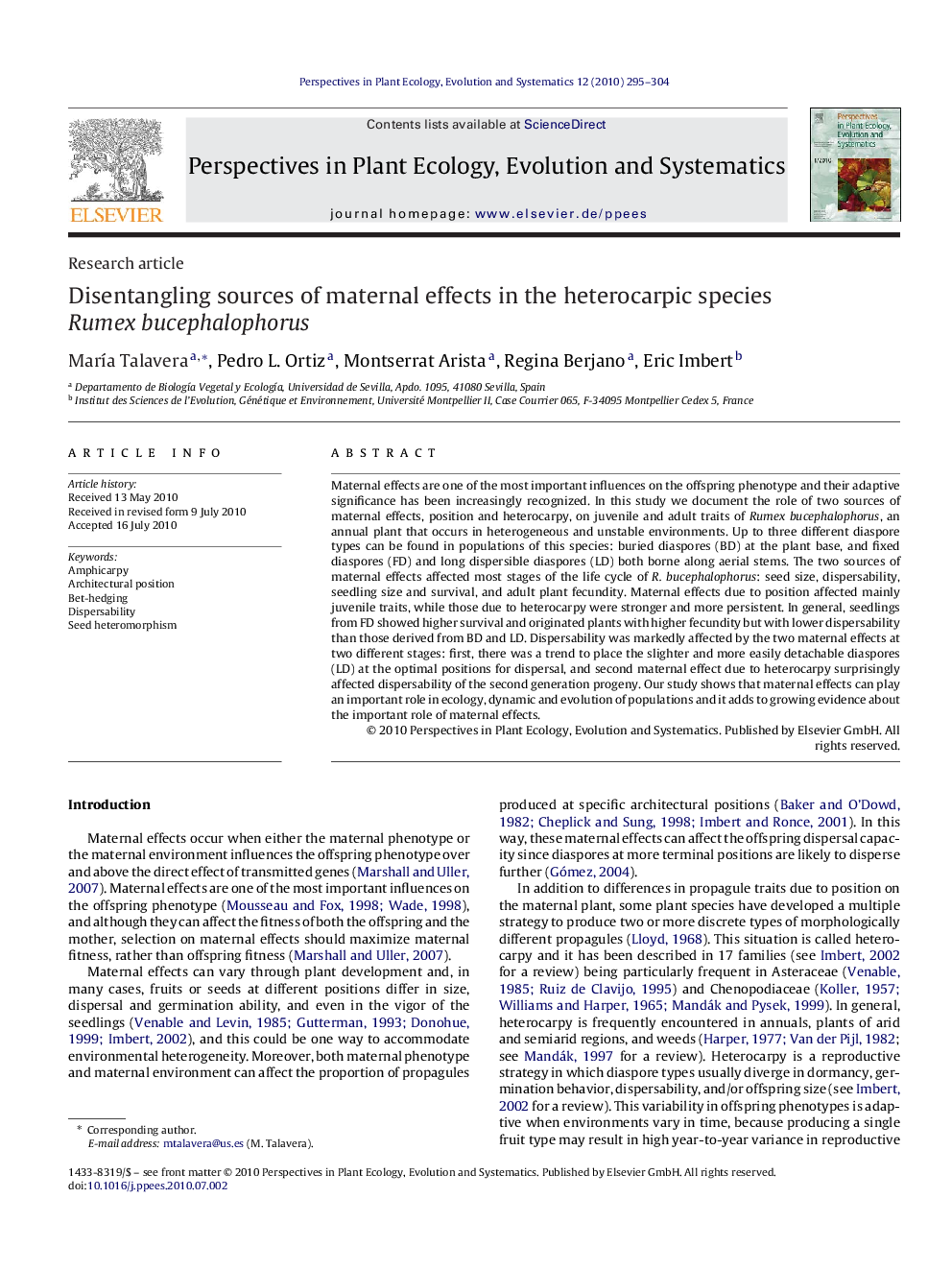| Article ID | Journal | Published Year | Pages | File Type |
|---|---|---|---|---|
| 4401125 | Perspectives in Plant Ecology, Evolution and Systematics | 2010 | 10 Pages |
Maternal effects are one of the most important influences on the offspring phenotype and their adaptive significance has been increasingly recognized. In this study we document the role of two sources of maternal effects, position and heterocarpy, on juvenile and adult traits of Rumex bucephalophorus, an annual plant that occurs in heterogeneous and unstable environments. Up to three different diaspore types can be found in populations of this species: buried diaspores (BD) at the plant base, and fixed diaspores (FD) and long dispersible diaspores (LD) both borne along aerial stems. The two sources of maternal effects affected most stages of the life cycle of R. bucephalophorus: seed size, dispersability, seedling size and survival, and adult plant fecundity. Maternal effects due to position affected mainly juvenile traits, while those due to heterocarpy were stronger and more persistent. In general, seedlings from FD showed higher survival and originated plants with higher fecundity but with lower dispersability than those derived from BD and LD. Dispersability was markedly affected by the two maternal effects at two different stages: first, there was a trend to place the slighter and more easily detachable diaspores (LD) at the optimal positions for dispersal, and second maternal effect due to heterocarpy surprisingly affected dispersability of the second generation progeny. Our study shows that maternal effects can play an important role in ecology, dynamic and evolution of populations and it adds to growing evidence about the important role of maternal effects.
